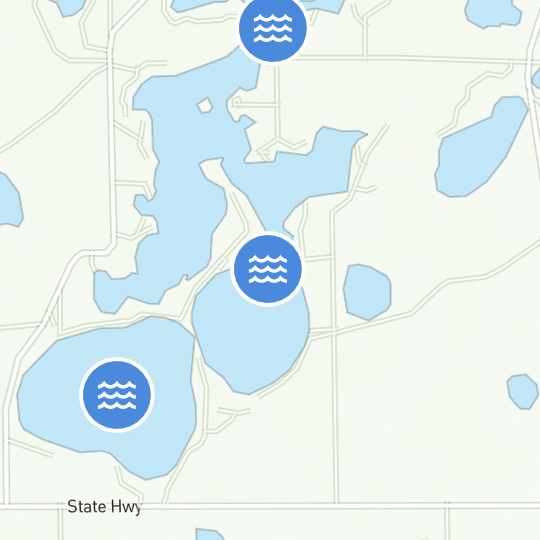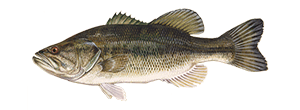Fishing Line Joining Knots
Mastering a variety of line joining knots is a must for aspiring anglers, as different knots have vastly different uses.
Fishing Line Joining Knots
The first thing to know about line joining knots is that there is generally more than one option for the result you are trying to accomplish. For example, if you were taught how to tie Albright knots for connecting backing to fly lines, that is a perfectly acceptable substitute for a backing knot. If you know how to make a surgeon's knot, making a double or triple surgeon's knot is simply a matter of making one or two additional twists, respectively, in the line before tightening. The below knots are tested and reliable for joining two pieces of fishing line.
Double Surgeon's Knot
Surgeon's knots are popular fly fishing knots. Not only is this knot easy to tie, it also happens to be one of the strongest line-to-line knots you can use. The number of twists you make in the knot determines what type of surgeon’s knot it is. One loop around is a single, two, a double, and three loops around is a triple knot.
This knot makes it easy to join two lines, but one line must be short enough to thread the end through the formed overhand loop. As with other lines, use a lot of overlapping line so that you can pull on all four ends to make it properly tight. Work with both lines together as you tie this, and make sure both loops are the same size to assure a strong knot.
Double Uni Knot
A double uni knot is two uni knots tied back to back, then placed together to form a strong connection. For maximum safety, line joining knots such as the double unit should leave plenty of line at the end of the knot on each piece of line you're joining. The ends help pull the two knots into one.
This line joining knot is great for attaching leader to your main line and works whether the lines are the same (braid to monofilament, or braid to fluorocarbon leader). This is how you tie a double uni knot, you need to tie a uni knot with each of the two lines, with the knots facing opposite directions as follows:
- Lay your main line and your leader or secondary line out in front of you so that they overlap for a good distance, start with at least a foot of overlap until you know how much you need.
- Form a loop in the left-hand portion of the overlap that goes clockwise. You should use the line that terminates to your left for this.
- Pass that line around the other line and through the loop five times (see uni knot above). Snug the knot up, but don’t pull it tight.
- With the line to your right, form a loop that goes counter clockwise.
- Pass that line around the other line and twist it through the loop five times. If you are using a larger diameter leader you might only need three wraps.
- Snug that knot up, but don’t pull it tight.
- Lubricate the two lines between the two knots with saliva. Grasp both lines and pull them away from each other. The knots should slide together and pull tight.
- Trim each tag closely. The finished knot should resemble a barrel.
Albright Line Joining Knots
Albright knots are popular fly line knots used for tying together two lines of unequal weight. In fly fishing, line to line knots of this type are routinely recommended for attaching the backing line (usually attached to the reel with an arbor knot – one of the most popular line to reel knots among fly anglers) to the main fly line.
This knot is also extremely useful in situations when you wish to tie a 15-pound test line on your rig to the 20-pound test line you currently have on your reel spool.
- Fold the leader back to form a loop, and pass the main line through the loop.
- Wrap the main line around itself and the loop 10 times.
- Pass the tag of the main line back through the loop.
- Start to close the knot with light pressure on both the tag and standing portions of the main line AND the tag of the leader.
- As the line tightens drop the tag of the leader and the tag of the main line and pull it completely tight with pressure of the line against the leader and trim closely.
Blood Fishing Knot
A blood knot (or barrel knot) is two back to back clinch knots and is most used for joining sections of monofilament nylon line of similar weight while maintaining a high portion of the line's inherent strength. Other line joining knots used for this purpose can cause a substantial loss of strength.
The principal drawback to the blood knot is the dexterity required to tie it. In fly fishing, this serves to build a leader of gradually decreasing diameter with an easily cast fly line attached at the large diameter end and the fly or hook at the small diameter end.
- Overlap the two lines. Place the two lines together with working ends opposite each other.
- Wrap your first line around the other line about 5 times, then take the tag end back towards the center and tuck it between the lines.
- Repeat this process on the other side, wrapping the second line around the first and bring the tag end back to the center and tucking it between the lines. A this point both tag ends should be in the center, facing opposite directions.
- Moisten the lines and tighten the wraps by pulling on the long ends of the line. Wrap the working end of the second line around the first line 5 times, and then insert the taf end through the gap from underneath.
Now that you are familiar with line joining knot tying. Learn how to tie other fishing knots and rigs.
KEEP LEARNING

How to Tie the Non-Slip Loop Knot
The non-slip loop knot is a popular and reliable choice for securing hooks, lures, and other tackle to your fishing line.
LEARN MORE

Socials
Take me fishing social media links
LEARN MORE

TakeMeFishing x Teen Vogue
Join us on a creative journey as fashion designer Ahmrii Johnson walks us through her collaborative vision and process with Teen Vogue and fashion brand, Rentrayage, to create a special piece.
LEARN MORE


.png?lang=en-US&ext=.png)